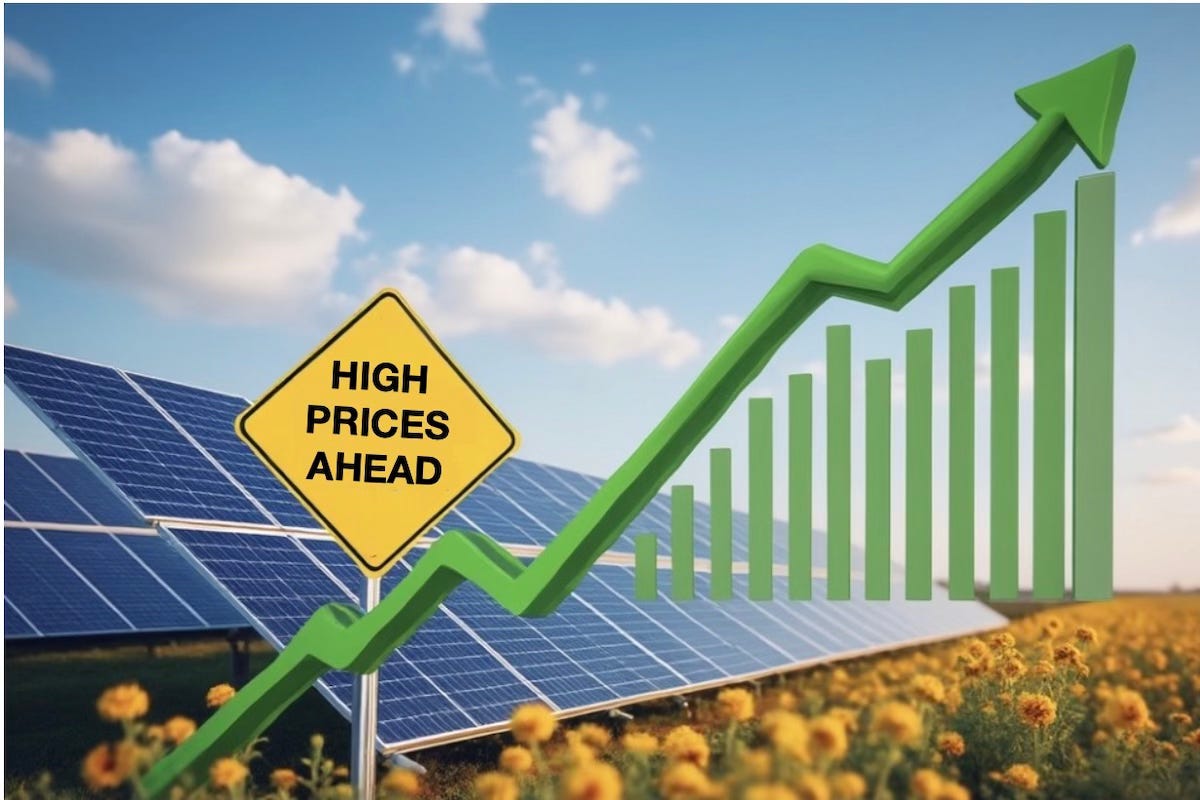SFGATE Tech Reporter Stephen Council has put together a terrific summary of an article capsulizing why California energy prices are so high and the Golden State's energy reliability is so low. The first six paragraphs follow and say it all (emphasis added):
A new analysis by Los Angeles Times staff writer Melody Petersen found major problems in the state’s current solar economy. Oversupply of solar power is causing California’s operators to regularly halt production or even pay electricity traders to take power off their hands. Sometimes, other states snag the extra energy for cheap. Meanwhile, California residents, businesses and factories pay around two to three times as much for power as the national average.
There are a range of factors at play, but a key takeaway from the Times’ analysis is that California’s most-in-the-nation solar panel buildup isn’t enough for an ideal alternative energy model. Millions of dollars of electricity go to waste because the infrastructure isn’t in place to store or move all the solar power.
California boasts some of the biggest solar farms in North America, with three huge plants opened in the mid-2010s. The state was responsible for nearly a fourth of utility-scale American solar power generation in 2023. California has an even larger share of the nation’s small-scale market, with many homes and businesses sporting their own panels. But as the Times pointed out, residential rates for customers of PG&E and Southern California Edison have risen by 51% over the past three years, far surpassing general inflation.
Despite the high prices, the Times found that California’s solar farms have curtailed production — meaning slowed or stopped — of more than 3 million megawatt hours over the past 12 months. That’s more than twice the amount from 2021, per the outlet, and is enough wasted energy to power 518,000 average Californian homes for a year. Meanwhile, the state is trying to build more solar plants to reach its renewable energy goals; a UC Berkeley researcher cited by the Times raised concerns that the intense curtailment will get in the way.
The curtailment has two causes, according to the United States Energy Information Administration. In some cases, power lines in the state don’t have capacity to take on and deliver energy; in others, generation exceeds customer demand. Either way, California’s grid operator tells solar producers to cut production using price drops or direct orders.
According to the Times, oversupply has occasionally gotten so bad in California that the prices go negative, forcing solar plants to pay energy traders to take it off their hands. “This is all being underwritten by California ratepayers,” energy consultant Gary Ackerman told the outlet. That’s because state residents pay fixed prices for the grid’s operation and upkeep. Due to the waste, they aren’t reaping the full rewards of those monthly charges or of the taxpayer-funded incentives for solar farms.
The solar industry, in other words, is eating its own tail. The article misses a couple of key points, though.
First, is the fact the state (and Feds) have subsidized so much solar at times it’s simply not needed, and it cannot help at the times it’s most needed, namely when the sun doesn’t shine or shine enough, which is roughly half the day. Moreover, battery storage isn't going to solve the problem as it's dangerous, expensive and very short-term. More grid infrastructure won't solve any of those problems. It will only make it easier to ship the excess electricity elsewhere for free or at further cost to ratepayers.
Second, is the reality that those ratepayers are also taxpayers and, therefore, they are paying for solar-generated electricity twice, as well as both coming and going. They pay twice with a combination of subsidies and very high additional costs for their electricity. That's the coming part, the going part is when they pay to dispose of the excess electricity they never needed.
This is what happens when a series of terrible governors from both parties indulge themselves with fantasies of riding into the Presidency on a green chariot. Now, combine that with a pretty boy trust-funder personality who knows nothing beyond how to demagogue an issue with energy-illiterate urban voters in a state dominated by such, and you have a mammoth crisis in the making. As Herb Stein famously said, though, “what can't go on, won’t.” Have things gotten bad enough in California to reach that point? Not yet, but it's getting much closer.
#California #Newsom #Electricity #Solar #ElectricRates






The green chariot, devastating policies, makes my heart sink and I’m in Georgia.
We have the worst State Government in the USA. They are paid functionaries of Sierra Club, unions, and “train to no where” type projects.